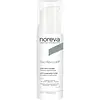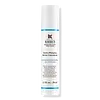What's inside
What's inside
 Key Ingredients
Key Ingredients

 Benefits
Benefits

 Concerns
Concerns

 Ingredients Side-by-side
Ingredients Side-by-side

Water
Skin ConditioningGlycerin
HumectantPropanediol
SolventAcetyl Glycyl Beta-Alanine
Skin ConditioningCellulose Gum
Emulsion Stabilising1,2-Hexanediol
Skin ConditioningCaprylyl Glycol
EmollientDisodium EDTA
Sodium Hydroxide
BufferingChlorphenesin
AntimicrobialPolydatin Glucoside
AntioxidantSodium Chloride
MaskingSodium Glycolate
BufferingTetrapeptide-30
Skin ConditioningLactic Acid/Glycolic Acid Copolymer
Skin ConditioningPalmitoyl Sh-Octapeptide-24 Amide
Skin ConditioningPolyvinyl Alcohol
Palmitoyl Tripeptide-5
Skin ConditioningPalmitoyl Sh-Tripeptide-5 Norisoleucyl Sh-Nonapeptide-1
Skin ConditioningWater, Glycerin, Propanediol, Acetyl Glycyl Beta-Alanine, Cellulose Gum, 1,2-Hexanediol, Caprylyl Glycol, Disodium EDTA, Sodium Hydroxide, Chlorphenesin, Polydatin Glucoside, Sodium Chloride, Sodium Glycolate, Tetrapeptide-30, Lactic Acid/Glycolic Acid Copolymer, Palmitoyl Sh-Octapeptide-24 Amide, Polyvinyl Alcohol, Palmitoyl Tripeptide-5, Palmitoyl Sh-Tripeptide-5 Norisoleucyl Sh-Nonapeptide-1
Water
Skin ConditioningGlycerin
HumectantDimethicone
EmollientPropanediol
SolventGluconolactone
Skin ConditioningDimethicone/PEG-10/15 Crosspolymer
Polymethylsilsesquioxane
Sodium Chloride
MaskingSodium Dextran Sulfate
Gel FormingSodium Hydroxide
BufferingPhenoxyethanol
PreservativeCitric Acid
BufferingChlorphenesin
AntimicrobialSodium Citrate
BufferingP-Anisic Acid
MaskingDisodium EDTA
PEG-10 Dimethicone
Skin ConditioningAdenosine
Skin ConditioningDipropylene Glycol
HumectantTocopherol
AntioxidantWater, Glycerin, Dimethicone, Propanediol, Gluconolactone, Dimethicone/PEG-10/15 Crosspolymer, Polymethylsilsesquioxane, Sodium Chloride, Sodium Dextran Sulfate, Sodium Hydroxide, Phenoxyethanol, Citric Acid, Chlorphenesin, Sodium Citrate, P-Anisic Acid, Disodium EDTA, PEG-10 Dimethicone, Adenosine, Dipropylene Glycol, Tocopherol
 Reviews
Reviews

Ingredients Explained
These ingredients are found in both products.
Ingredients higher up in an ingredient list are typically present in a larger amount.
Chlorphenesin is a synthetic preservative. It helps protect a product against bacteria in order to extend shelf life. In most cases, Chlorphenesin is paired with other preservatives such as phenoxyethanol and caprylyl glycol.
Chlorphenesin is a biocide. This means it is able to help fight the microorganisms on our skin. It is also able to fight odor-releasing bacteria.
Chlorphenesin is soluble in both water and glycerin.
Studies show Chlorphenesin is easily absorbed by our skin. You should speak with a skincare professional if you have concerns about using Chlorphenesin.
Learn more about ChlorphenesinDisodium EDTA plays a role in making products more stable by aiding other preservatives.
It is a chelating agent, meaning it neutralizes metal ions that may be found in a product.
Disodium EDTA is a salt of edetic acid and is found to be safe in cosmetic ingredients.
Learn more about Disodium EDTAGlycerin is already naturally found in your skin. It helps moisturize and protect your skin.
A study from 2016 found glycerin to be more effective as a humectant than AHAs and hyaluronic acid.
As a humectant, it helps the skin stay hydrated by pulling moisture to your skin. The low molecular weight of glycerin allows it to pull moisture into the deeper layers of your skin.
Hydrated skin improves your skin barrier; Your skin barrier helps protect against irritants and bacteria.
Glycerin has also been found to have antimicrobial and antiviral properties. Due to these properties, glycerin is often used in wound and burn treatments.
In cosmetics, glycerin is usually derived from plants such as soybean or palm. However, it can also be sourced from animals, such as tallow or animal fat.
This ingredient is organic, colorless, odorless, and non-toxic.
Glycerin is the name for this ingredient in American English. British English uses Glycerol/Glycerine.
Learn more about GlycerinPropanediol is an all-star ingredient. It softens, hydrates, and smooths the skin.
It’s often used to:
Propanediol is not likely to cause sensitivity and considered safe to use. It is derived from corn or petroleum with a clear color and no scent.
Learn more about PropanediolChances are, you eat sodium chloride every day. Sodium Chloride is also known as table salt.
This ingredient has many purposes in skincare: thickener, emulsifier, and exfoliator.
You'll most likely find this ingredient in cleansers where it is used to create a gel-like texture. As an emulsifier, it also prevents ingredients from separating.
There is much debate on whether this ingredient is comedogenic. The short answer - comedogenic ratings don't tell the whole story. Learn more about comegodenic ratings here.
The concensus about this ingredient causing acne seems to be divided. Research is needed to understand if this ingredient does cause acne.
Scrubs may use salt as the primary exfoliating ingredient.
Learn more about Sodium ChlorideSodium Hydroxide is also known as lye or caustic soda. It is used to adjust the pH of products; many ingredients require a specific pH to be effective.
In small amounts, sodium hydroxide is considered safe to use. However, large amounts may cause chemical burns due to its high alkaline.
Your skin has a natural pH and acid mantle. This acid mantle helps prevent harmful bacteria from breaking through. The acid mantle also helps keep your skin hydrated.
"Alkaline" refers to a high pH level. A low pH level would be considered acidic.
Learn more about Sodium HydroxideWater. It's the most common cosmetic ingredient of all. You'll usually see it at the top of ingredient lists, meaning that it makes up the largest part of the product.
So why is it so popular? Water most often acts as a solvent - this means that it helps dissolve other ingredients into the formulation.
You'll also recognize water as that liquid we all need to stay alive. If you see this, drink a glass of water. Stay hydrated!
Learn more about Water